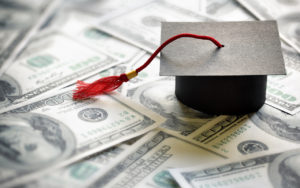 U.S. student loan borrowers owe approximately $1.7 trillion on their student loans. About 92% of that amount consists of federal student loans (debt owed to the U.S. government), with the remainder owed to a growing market of private lenders. Despite the fact that default rates have increased consistently since 2003, a substantial marketplace developed for student loan asset-backed securities (SLABS). That marketplace, and the world of student loans more generally, are now being buffeted by a confluence of factors creating great uncertainty about what the future holds. These factors include the prospect of forthcoming student loan legislation, continuing concerns about the effects of COVID-19 on the larger economy, and structural changes affecting securitizations and the underwriting of student loans.
U.S. student loan borrowers owe approximately $1.7 trillion on their student loans. About 92% of that amount consists of federal student loans (debt owed to the U.S. government), with the remainder owed to a growing market of private lenders. Despite the fact that default rates have increased consistently since 2003, a substantial marketplace developed for student loan asset-backed securities (SLABS). That marketplace, and the world of student loans more generally, are now being buffeted by a confluence of factors creating great uncertainty about what the future holds. These factors include the prospect of forthcoming student loan legislation, continuing concerns about the effects of COVID-19 on the larger economy, and structural changes affecting securitizations and the underwriting of student loans.
With a new presidential administration in place and a shift in control of the Senate, there is a lot of speculation about potential new legislation and regulations pertaining to student loans. It seems likely that the new administration will push for increased tuition funding through mechanisms like larger Pell grants for students. The dischargeability in bankruptcy of student loan debt will likely be revisited. There was a lot of talk during the Democratic presidential primaries about loan forgiveness, but most observers currently expect that any forgiveness that gets approved by Congress will be in a relatively modest amount, perhaps $5,000 to $10,000.
Economic trends are also sparking growing uncertainty about the desirability of investment in SLABS. Default rates remain high, and student loans, unlike mortgages, are not collateralized. That makes investors especially vulnerable to defaults. Moreover, current low-interest rates generally mean lower potential yields for investors, making SLABS less enticing at the moment.
The resurgence of virus cases creates still more uncertainty. Difficulty in forecasting what the ultimate effects will be on the overall economy may breed skittishness about SLABS, particularly since it is reasonable to expect that students will have more trouble repaying outstanding student loans once current moratoriums on payment obligations expire.
With defaults likely to increase, look for an uptick in litigation related to this type of investment. Investors can be expected to feel motivated to use lawsuits, or at least the threat of lawsuits, as recourse to recover the losses that they are likely to suffer.
